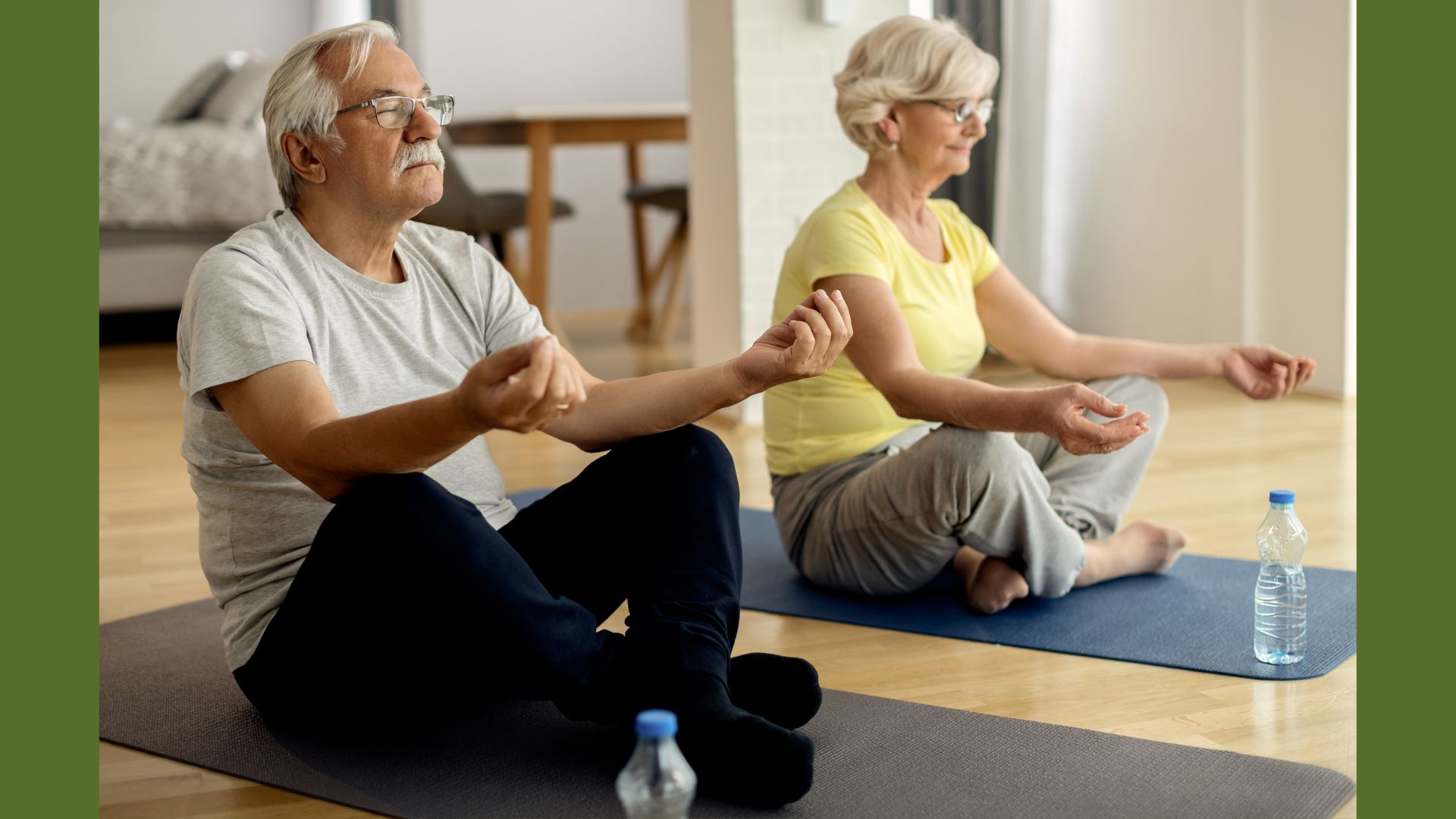These 5 Breathing Techniques Keep the Heart of an Old Person Young on a Daily Basis

Your heart doesn’t have to age as fast as the calendar suggests. While most people accept that cardiovascular decline comes naturally with getting older, science reveals a different story. Simple breathing exercises can turn back the clock on your heart’s health, reducing blood pressure and improving circulation within just weeks of practice.
Thousands of seniors worldwide have discovered that the secret to maintaining a youthful cardiovascular system lies not in expensive treatments, but in something you do 20,000 times every day.
These five powerful breathing techniques work by activating your body’s natural healing mechanisms. Each method targets specific aspects of heart health, from regulating rhythm to improving oxygen delivery throughout your system.

Research from leading medical institutions shows that seniors who practice these daily exercises experience heart function comparable to people 10-15 years younger. Best of all, you can start today with just 10 minutes and see measurable improvements in your cardiovascular health.
The Heart-Breath Connection: Why Breathing Matters More as We Age
Your heart works harder as you grow older. Blood vessels become stiffer, making circulation more challenging for the cardiovascular system. Each breath directly influences your heart’s rhythm through a natural process called heart rate variability.

When you breathe in, your heart rate increases slightly; when you exhale, it decreases. Research from Harvard Medical School shows that seniors who practice controlled breathing exercises experience 23% better cardiac function compared to those who don’t.
The Hidden Dangers of Shallow Breathing in Seniors
Many older adults develop breathing problems without realizing it. Chest muscles weaken over time, causing people to take shorter, more frequent breaths. This shallow breathing pattern forces your heart to pump faster to deliver adequate oxygen throughout your body.

Poor breathing habits create a dangerous cycle: less oxygen reaches your tissues, your heart compensates by working overtime, and blood pressure rises as a result. Studies reveal that shallow breathers face 40% higher risk of cardiovascular complications.
The Science Behind Therapeutic Breathing for Heart Health
Controlled breathing switches on your body’s relaxation response through the parasympathetic nervous system. This natural mechanism slows your heart rate and lowers blood pressure within minutes of practice.

Clinical trials from the American Heart Association demonstrate that just 10 minutes of daily breathing exercises can reduce systolic blood pressure by 8-12 points.
Deep, rhythmic breathing also improves blood flow and reduces harmful inflammation markers in the cardiovascular system. Your body releases nitric oxide during proper breathing, which helps blood vessels relax and expand naturally.
Box Breathing (4-4-4-4 Technique)
Start by inhaling slowly through your nose for 4 counts, then hold your breath for another 4 counts. Exhale through your mouth for 4 counts and pause for 4 more counts before beginning again. This simple pattern creates a square rhythm that stabilizes your heart rate within 3-5 minutes of practice.
Your nervous system responds by lowering stress hormones and reducing cardiac workload significantly. Morning practice works best for establishing steady heart rhythms throughout the day. Evening sessions help prepare your cardiovascular system for restorative sleep. Begin with 5 cycles and gradually increase to 10 as your comfort improves.
Deep Diaphragmatic Breathing
Place one hand on your chest and another on your belly to feel the correct movement. Breathe in slowly through your nose, allowing only your lower hand to rise while your chest stays relatively still. Your diaphragm muscle does most of the work, which takes pressure off your heart by improving oxygen exchange efficiency.
Seniors can practice this technique while sitting in a supportive chair or lying flat with knees bent. Those with mobility issues can use pillows for extra support under their arms or back. This method reduces your heart’s oxygen demands by up to 30% compared to shallow chest breathing. Practice for 5-10 minutes twice daily to see measurable improvements in cardiac function.
The 4-7-8 Relaxation Breath
Exhale completely through your mouth before starting this powerful technique developed by Dr. Andrew Weil. Breathe in through your nose for 4 counts, hold for 7 counts, then exhale through your mouth for 8 counts. This extended exhale activates your vagus nerve, which directly signals your heart to slow down. Blood pressure typically drops 5-10 points within minutes of practicing this method correctly.
Seniors with heart conditions should start with shorter holds (4-5-6 pattern) until comfortable with the full sequence. Never force the breath holding if you feel dizzy or uncomfortable. Limit sessions to 4 cycles initially to avoid overstimulation of your nervous system.
Coherent Breathing (5-5 Rhythm)
Breathe in for 5 seconds and out for 5 seconds to achieve the optimal respiratory rate of 6 breaths per minute. This specific timing maximizes heart rate variability, which indicates a healthy, adaptable cardiovascular system. Your heart and lungs work together more efficiently when you maintain this steady 5-5 pattern.
Unlike other techniques, you can practice coherent breathing while walking, reading, or doing light household tasks. The beauty lies in its simplicity and versatility for daily integration. Research shows that 20 minutes of coherent breathing improves heart function for up to 6 hours afterward. Many seniors find this technique easier to maintain than more complex breathing patterns.
Alternate Nostril Breathing (Modified for Seniors)
Use your right thumb to gently close your right nostril while breathing in through the left for 4 counts. Switch by closing the left nostril with your ring finger and exhaling through the right for 4 counts. This simplified version eliminates complex finger positions that can be challenging for older adults with arthritis. Your autonomic nervous system becomes more balanced as both sides of your brain receive equal stimulation.
Blood flow improves throughout your body as this practice helps regulate blood pressure naturally. Seniors with limited hand mobility can simply focus on breathing through one nostril at a time without using fingers. Practice for 5-8 minutes daily to support overall cardiovascular health and mental clarity.
Creating a Daily Heart-Healthy Breathing Routine
Begin your morning with 5 minutes of box breathing to set a calm heart rhythm for the day. Use diaphragmatic breathing during afternoon rest periods when your energy naturally dips. Evening sessions work best with the 4-7-8 technique to prepare your cardiovascular system for restorative sleep.

Start with just 10 minutes total daily practice and gradually increase by 2-3 minutes each week. Track your resting heart rate and blood pressure weekly to monitor improvements, and notice if you feel less winded during daily activities like climbing stairs or walking.
Conclusion,
Your heart has been beating faithfully for decades, and now it deserves the best care you can give it. These five breathing techniques offer a natural, medication-free way to support your cardiovascular health as you age. Remember that consistency matters more than duration when starting your breathing practice.
Even five minutes daily can create meaningful changes in your heart’s function and overall well-being. Your breath is always with you, making it the most accessible tool for maintaining a young, healthy heart. Start today, breathe deeply, and give your heart the gift of longevity it truly deserves.






